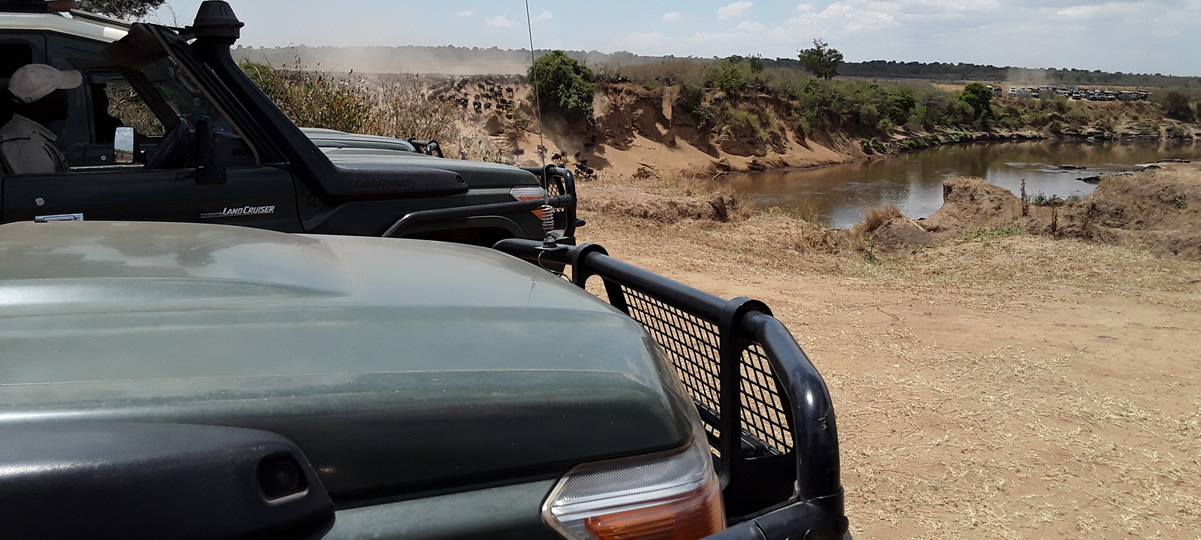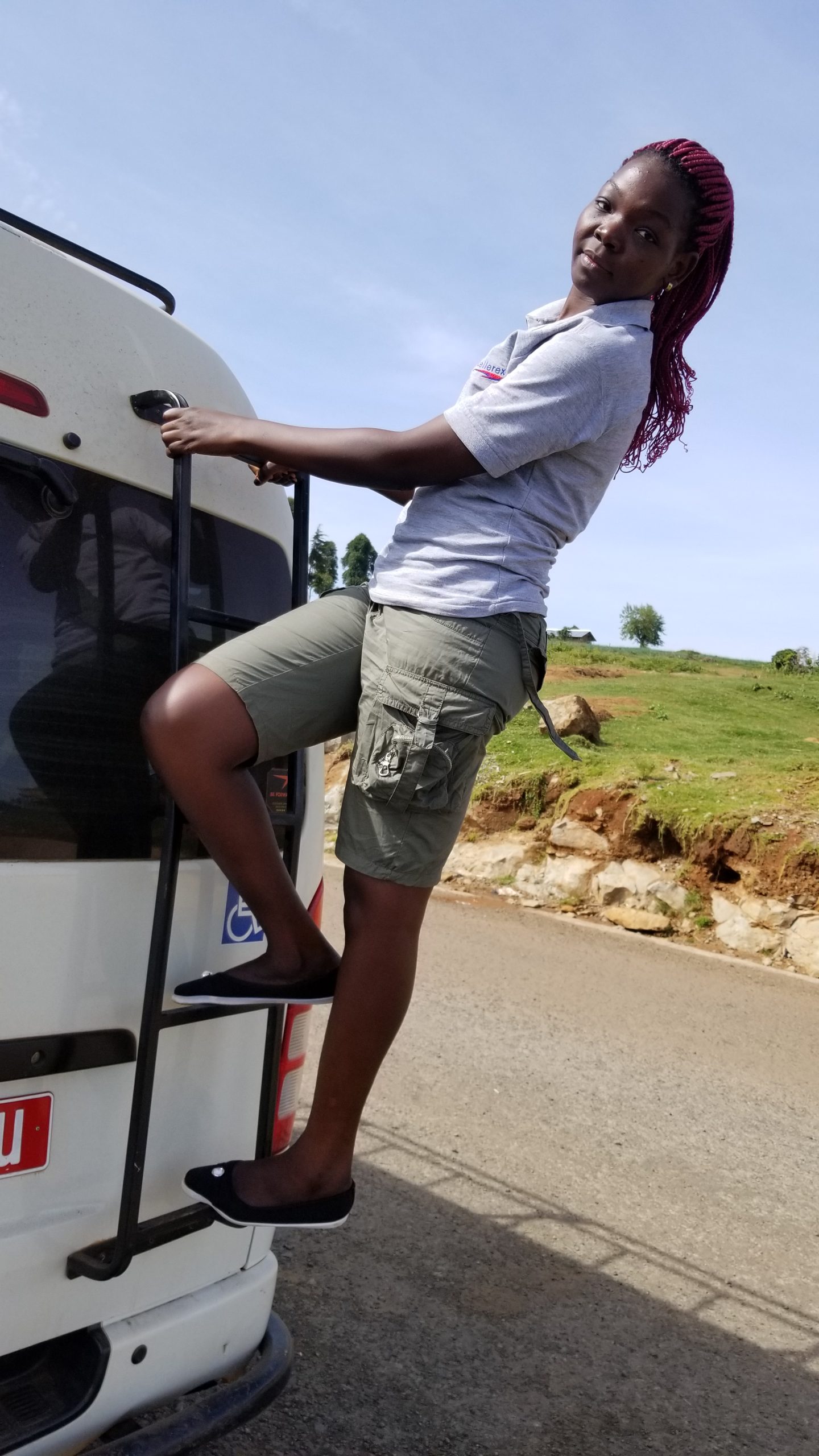Is it safe to self-drive in Masai Mara?
 Is it safe to self drive in Masai Mara? Yes! Self-driving in Masai Mara national reserve with Self Drive Kenya is a truly remarkable experience – the thrill of driving along a track by yourself and coming across herds of Wildebeests, Zebras, grand gazelles, giraffes, elephants a pride of lions basking under a nearby tree, or waiting at a peaceful waterhole and having a sighting all to yourself is hard to beat.
Is it safe to self drive in Masai Mara? Yes! Self-driving in Masai Mara national reserve with Self Drive Kenya is a truly remarkable experience – the thrill of driving along a track by yourself and coming across herds of Wildebeests, Zebras, grand gazelles, giraffes, elephants a pride of lions basking under a nearby tree, or waiting at a peaceful waterhole and having a sighting all to yourself is hard to beat.
The Masai Mara National Game Reserve or national park is the premier self-drive safari destination in Kenya, with an unstoppable variety of wildlife and habitats to explore, an excellent infrastructure of tracks within the park, exclusive accommodation options, and a feeling of huge, wide-open spaces.
The Mara, is a vast national game reserve in Narok, Kenya, connecting with the Serengeti National Park in Tanzania. It is named in respect of the Maasai people, the ancestral occupants of the area, who migrated to the area from the Nile Basin. Their description “Mara” means “spotted” in the local Maasai language, because of the many short bushy trees which dot the landscape.
Maasai Mara is one of the most prominent and exclusive wildlife conservation and wilderness areas in Africa, famed for its large populations of lion, African leopard, cheetah and African bush elephants. Whereas Masai mara on the other hand hosts the Great Migration, which preserved it as one of the Seven Natural Wonders of Africa, and as one of the ten Wonders of the World.
The Greater Mara ecosystem covers areas such as the Maasai Mara National Reserve, the Mara Triangle, and several Maasai Conservancies, including Koiyaki, Lemek, Ol Chorro Oirowua, Mara North, Olkinyei, Siana, Maji Moto, Naikara, Ol Derkesi, Kerinkani, Oloirien, and Kimintet.
Covering an area of nearly 1520 km2, the Park boasts an exclusive rich mix of wildlife, including over 95 species of mammals and over 570 recorded species of birds and a magnificent array of different kinds of trees.
The Great Wildebeests Migration in Mara national Park
Masai Mara National Park is well known for the great wildebeest migration, where vast herds of a million plus wildebeest, zebras as well as other animals which includes the Big Cats migrate northwards into the Mara from Serengeti National Park.
The Great Wildebeest Migration is undeniably the natural world’s most authentic spectacles. Comprising at least 1.5 million wildebeest, zebras, and antelopes, the Great Migration encompasses the last surviving multi-species migration on the planet. The Mara reserve is an idyllic naturalist’s paradise, with several herds of elephants, buffaloes, giraffe, lion and cheetah alongside the migratory wildebeest and zebras. Leopards are frequently sighted, endangered black rhino hide in the dense thickets and large rafts of hippo and enormous crocodiles are found in the Mara River.
The annual great wildebeest migration unfolds the best time to visit the Mara from the end of June where millions of freshly arrived brown and black dots scatter the great plains of the Mara, making this Natural Wonder of the World even more breathtaking. The migration continues through to the month of October, which involves dangerous crossings through crocodile-infested rivers.
From mid-October to December, as the rains decrees and the grass begins to dry up, the Wildebeest and the Zebra herds pick up the pace, and head south in search of greener pasture. After passing through Naboisho Conservancy the Northern Migration arrives in the Mara just in time with more than 1.5 million attendees!. This is a great time to watch the Migration.
What Kind of car do you need for a self drive safari to Masai Mara National Reserve?
Just like other Africa safari parks, such as Murchison Falls National Park in Uganda, the Serengeti National Park in Tanzania, or Kruger national Park in South Africa, Masai Mara can be seen on a sturdy 4X4 land cruiser or safari van.
A self-drive Masai Mara safari tour is a self-drive- where you have to do all the work yourself. This means driving very slowly (30 to 40 km/h) and looking with extreme concentration. Not just gazing out the window like you would on a pleasant afternoon drive. A self-drive Masai Mara safari calls for intense looking; concentrating on a spot and checking for any movement, colour or shape that might not be a bush.
Although self-driving is more tedious, and surprisingly so if you are concentrating for hours to the end, the rewards are well worth it. The satisfaction we get from spotting a rare black rhino hiding in the scrub is intense. If you’re lucky, the other reward of a self-drive Masai Mara safari is that you have enough time to enjoy your safari all by yourself.
Getting there and Away- How to get to Masai Mara
Masai Mara has excellent road and flight connections from Nairobi or Kisumu to the Park, although flying is the fastest way to get to Mara. There are daily flights from Nairobi to several airstrips adjacent to the park. On arrival, you can collect your self drive rental car and set off on your self-drive Masai Mara adventure
If you are starting from Nairobi, you can pick up your hire car here and drive to Masai Mara –
On the other hand, Maasai Mara is approximately 280 km, west from Nairobi. it is a straightforward drive, but you would need to allow up to 4-6 hours for the journey. On a self-drive, you will enjoy breathtaking views of the Great Rift Valley, Mount Suswa as well as Mount Longonot.
Whereas the road from Narok to Masai Mara National game reserve is quite rough and it is advisable to use a 4×4 sturdy vehicle such as Toyota Land Cruisers Lx, Extended land cruisers, Land Cruiser GX as this will make your ride a bit smoother. Upon reaching Masai Mara there are a number of entry gates such as Sand River, Musiara, Talek, Sekenani or Oloololo Gate.
Masai mara national Park gate
Masai mara National Reserve can easily be accessed through most of the commonly distributed gates leading to the park at any angle. These gates are frequently used by self drive roadtrip travelers who access and exit the Masai Mara national Reserve. While on aself drive, one can easily access Masi Mara using one of the 6 gates;
Oloololo Gate
Oloololo gate is nestled on the north eastern region of Maasai Mara National Reserve, a few hours distance south of one of the tributaries for the Mara river. The gate is accessed through C13 Aitong road and C14 -Singor – Kaboson road. You can also use this gate to drive to west of the Mara river as well as to the north of the walls of the rift valley known as the Oloololo escarpment. The best lodging options nearby Oloololo gates includes Mara Big Five Lodge, Fairmont Mara Safari Club, Entim Mara Camp and Oltome Mara Magic Resort among others.
Sekanani Gate
Sekenani Gate is situated on the borders of Sekenani town, between vast Savannah plains on the eastern border of Masai Mara national reserve. It is the main gate and most preferred due to the easy access to the main road from Narok Town.
The best lodging options adjacent to Sekenani gates includes Mara Sarova Game Camp, Keekorok Lodge, Mara Sweet Acacia Lodge, Mara Springs Safari Camp, Enkolong Tented Camp, Kimana Mara Tented Camp, oldarpoi Mara Camp, Sekenani Camp and AA Lodge Maasai Mara.
Talek gate
Situated between the large Open Savannah grassland, Talek gate is located on the North western side of Maasai Mara National Reserve, next to the prominent Talek River which acts like a natural border between the Eastern and Western region of Maasai Mara. It is one among the most developed gates in Maasai Mara,
The best lodging options near Talek gates includes Mara Intrepids Tented Camp, Julia’S River Camp, Aruba Mara Camp, Tipilikwani Mara Camp, Mara Leisure Camp, Fig Tree Camp, Azure Mara Haven, Mara Simba Lodge and Mara Serena Safari Lodge.
Ololaimutia Gate
Oloolaimutia Gate is nestled on the border of Oloolaimutia town, amidst the hilly eastern edge of Masai Mara national reserve. The best lodging options near Oloolaimuita gates includes Ol Moran Tented Camp, Mara Sidai Camp, Acacia Camp Mara among others.
Sand River Gate
The Sand river gate is situated on the northern bank of the Sand river, one of the tributaries for the Mara river as well as a crossing point for the wildebeest migration. It sits on the southern border of Masai mara national reserve, a few minutes from the border between Kenya and Tanzania as well as the Bologonja gate into serengeti national park. The gate is rarely used due to the closure of the nearby border between Kenya and Tanzania, as the Isebania border is being used instead.
Musiara Gate
Though located on the opposite side of Mara River, Musiara Gate is suitably situated at the end of the north eastern part of Maasai Mara National Reserve, just a short distance east of Oloololo gate.
The best lodging nearby Musiara gates includes Little Governors Camp, Governors Camp, Governors’ IL Moran Camp, Kandili Camps, Angama Mara, Karen Blixen Camp, Kilima Camp and Nyota Mara Camp.


